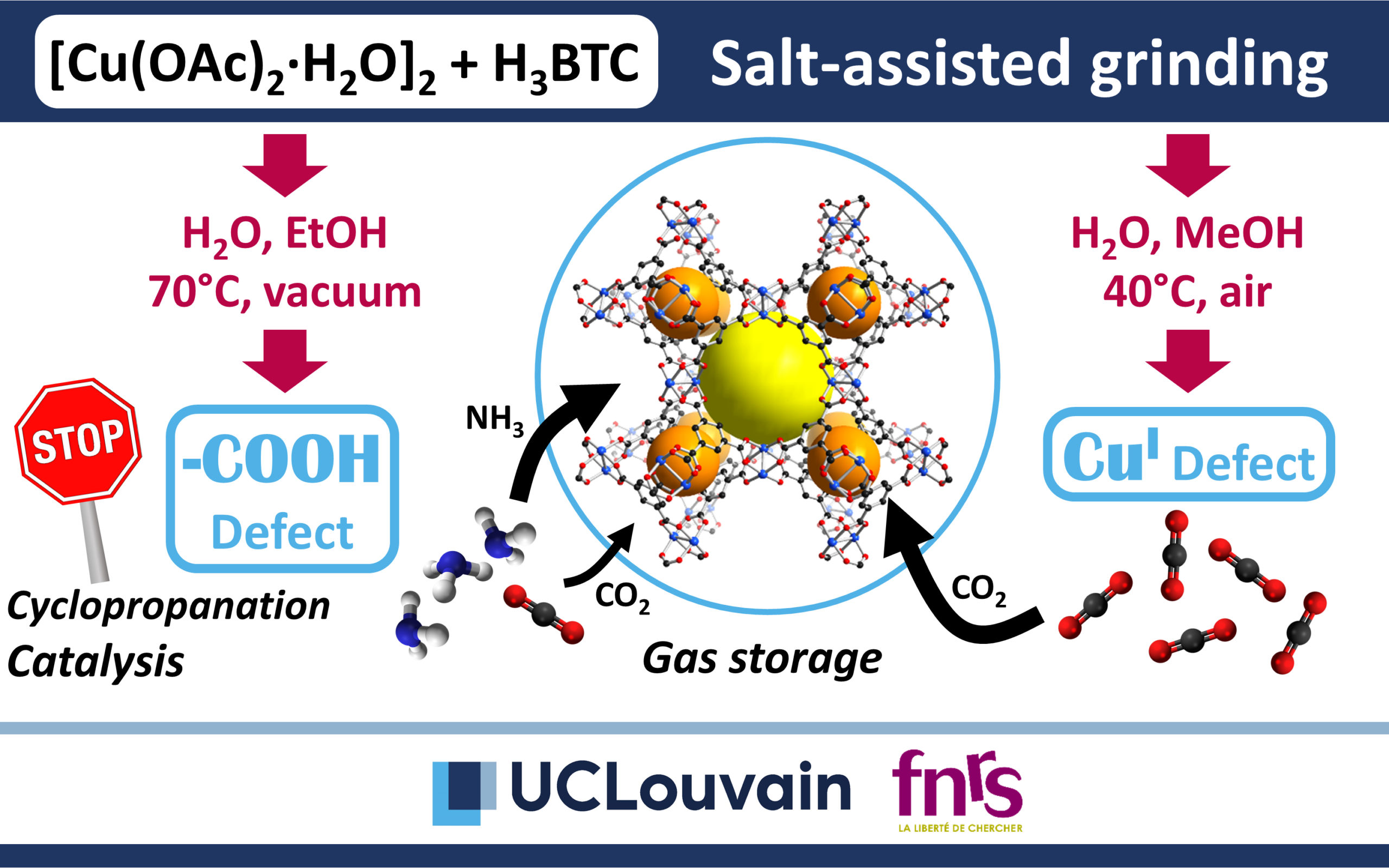Metal–organic frameworks (MOFs), that are hybrid porous materials built from the assembly of metal centers and bridging organic linkers, are ideal candidates for many demanding applications including gas sorption and catalysis. For a long time, the properties of these materials were thought to essentially arise from their well-defined crystal structures.
It is only recently that the impact of structural defects on the properties of MOFs has been evidenced. Such defects, usually present in the form of missing linkers and/or metallic atoms, can significantly enhance, or on the contrary, lead to complete loss of performances for a given application. The understanding of structural defects in MOFs is therefore of crucial importance in further development of these fascinating materials, in academic research as well as in emerging industrial applications.

In the laboratories of Profs. S. Hermans and Y. Filinchuk (Institute of Condensed Matter and Nanosciences, UCLouvain, Belgium), salt-assisted (SAG) and liquid-assisted (LAG) grinding, were used to introduce defects in a copper-based MOF, namely HKUST-1. Different milling times and post-synthetic treatments with alcohols allowed introduction of defective sites in the form of free carboxylic acid groups or reduced copper(I) sites. The nature and the amount of defects were evaluated by means of spectroscopic methods (FTIR, XPS) as well as TGA. NH3 temperature-programmed desorption experiments realized with a Hiden CATLAB-PCS combined with a Hiden QGA quadrupole mass spectrometer were also particularly useful to confirm the presence of carboxylic acid defects in the materials obtained by SAG after treatment with ethanol. Indeed, non-defective HKUST‑1 shows a single peak in the desorption curve, which is ascribed to desorption of ammonia coordinated onto the copper atoms. By opposition, in the presence of partly uncoordinated carboxylic acid functions in the MOF linkers, a shoulder is present on the desorption curve at higher temperature, indicating higher affinity for ammonia within the defective materials.
This study points out the negative impact of free –COOH groups in HKUST‑1 on the catalytic cyclopropanation reaction of ethyl diazoacetate with styrene, as well as on the gravimetric CO2 sorption capacities of the materials. However, the improvement of the catalytic activity of carboxylic acid containing materials by the presence of CuI sites was also evidenced.
The entire study is freely available in RSC. Adv., 2020, 10, 19822 (DOI: 10.1039/c9ra10412g).
Paper Reference: “Mechanochemical defect engineering of HKUST-1 and impact of the resulting defects on carbon dioxide sorption and catalytic cyclopropanation” RSC Advances, 2020, 34, 19822-19831 https://doi.org/10.1039/C9RA10412G
Download Project Summary: AP-QGA-202027
 Project summary by: Timothy Steenhaut, Prof. Sophie Hermans and Prof. Yaroslav Filinchuk, Université catholique de Louvain, IMCN, Place Louis Pasteur 1/L4.01.03, 1348 Louvain-la-Neuve, Belgium
Project summary by: Timothy Steenhaut, Prof. Sophie Hermans and Prof. Yaroslav Filinchuk, Université catholique de Louvain, IMCN, Place Louis Pasteur 1/L4.01.03, 1348 Louvain-la-Neuve, Belgium
To find out more about this product visit the CATLAB & QGA product page or if you would like to contact us directly please Send us a Message.

